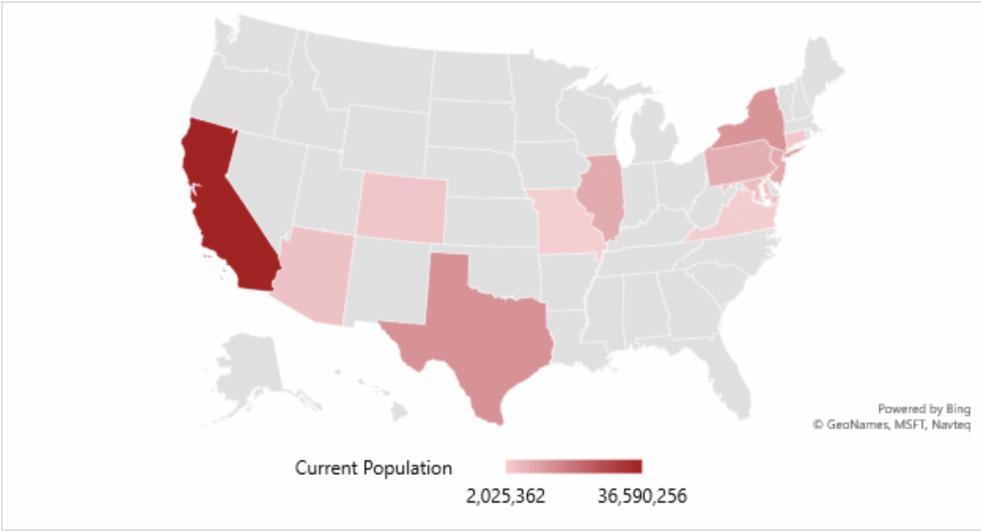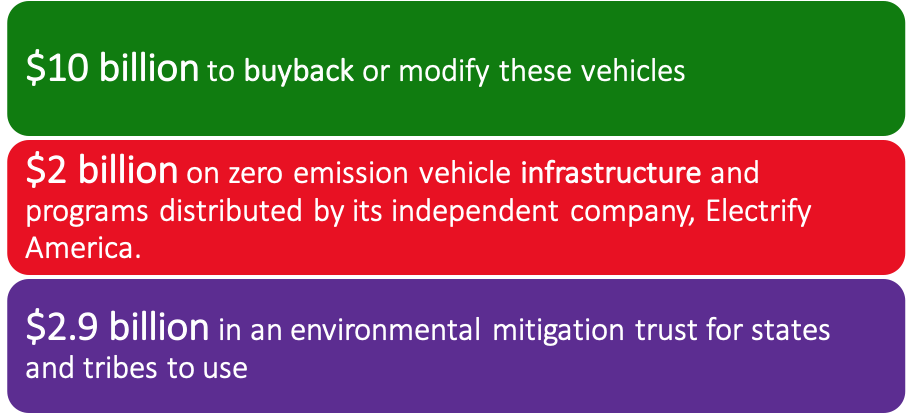The VW Scandal Leads to a Path to Healthier Cities

Who will you meet?
Cities are innovating, companies are pivoting, and start-ups are growing. Like you, every urban practitioner has a remarkable story of insight and challenge from the past year.
Meet these peers and discuss the future of cities in the new Meeting of the Minds Executive Cohort Program. Replace boring virtual summits with facilitated, online, small-group discussions where you can make real connections with extraordinary, like-minded people.
Over 112 million Americans still live in a county that does not meet the ozone standards under the Clean Air Act, a multi-decade long effort to reduce the harmful effects of air pollution on human health and the environment (see the map below). These populations, disproportionately low-income and communities of color, face a present risk from local pollution by diesel motor vehicles. As the transportation industry transitions to advanced low or no emission technology, these communities also face the future risk of being left behind. The Volkswagen Settlement, a $2.9 billion infusion into state coffers, is a rare opportunity to bring meaningful, lasting change to these communities by investing in transformative, zero emission technology. The good news is over 40 states have already made commitments in their state funding plans to accelerate this transition by allocating over $600 million in funding to the technology.

Figure 1: U.S. population living in counties in nonattainment of air pollution standards. Source: Atlas Public Policy analysis of data from the U.S. Census Bureau and U.S. Environmental Protection Agency.
Origin of the Largest Environmental Settlement in U.S. History
The U.S. Environmental Protection Agency and the Federal Trade Commission filed a civil complaint against Volkswagen that claimed the automaker installed software in some of its diesel models that enabled emissions controls only when the vehicles were being tested. This software resulted in greater vehicle performance on the road, but also an average on-road emissions nine to 38 times the U.S. limit, which is equivalent to those of a tractor-trailer.
The complaint resulted in a settlement whereby Volkswagen agreed to spend $14.7 billion, a U.S. record for an environmental protection action. These funds are divided into three parts, see Figure 2.

Figure 2: Volkswagen’s was the largest environmental settlement in U.S. history.
The $2.9 billion placed in the environmental mitigation trust is funding for states and tribes to reduce mobile source pollutants, particularly harmful nitrogen oxides (NOx) emissions, a precursor to ozone, which can cause asthma and respiratory infections. Ozone pollution persists in disadvantaged communities, low-income zones that are often passed up when investment decisions are made to deploy new technologies. In addition, vehicle tailpipes are one of the major contributors to greenhouse gas emissions, the source of human-caused climate change.
According to the U.S. Environmental Protection Agency (EPA), the plurality of greenhouse gas emissions in the United States come from the transportation sector; of this, the majority of emissions come from light-duty vehicles with one quarter of transportation emissions coming from medium- and heavy-duty vehicles.
Reducing tailpipe emissions helps to mitigate transportation’s impact on human health and climate change. With the $2.9 billion environmental mitigation trust, states have the chance to take on these two big challenges at the same time. The trust allows for states to use 15 percent of their allocated funds towards light-duty electric vehicle supply equipment (EV chargers) and provides no limits on funding for a variety of zero emission trucks, buses, and their associated charging infrastructure.
VW Funds are a Transformative Opportunity for Mobility
All 50 states and Puerto Rico are participating in this program and are currently in various stages of submitting their “mitigation plans” and distributing funds. Atlas Public Policy has been tracking their progress closely through our platform, the Atlas EV Hub, a free resource for public agencies to track market developments and related progress on transportation electrification.
States are making a point to concentrate their funds in communities that do not meet the Clean Air Act standards (referred to as nonattainment). These areas tend to have high-density populations and include major cities. Illinois, for example, has focused its initial funding opportunities in the Chicago Metropolitan nonattainment area, a collection of six counties and two townships. Texas has dedicated 81 percent of its funds to projects in five priority areas: Dallas-Fort Worth, EL Paso, San Antonio, Beaumont-Port Arthur, and Houston-Galveston-Brazoria, which represent 62.5 percent of the state’s population. Three of these regions are nonattainment areas, while additional counties in the San Antonio area have been included due to their proximity.
States are also taking advantage of the VW scandal to accelerate the transition to zero emission technology. As of November 2018, 41 of 46 states who released a draft or final mitigation plan are planning to invest over $265 million in light-duty EV chargers. In addition, 8 states have dedicated programs for zero emission trucks and buses, totaling over $370 million; California alone is planning to invest $290 million in zero emission technology for medium- and heavy-duty vehicles.

Figure 3: 41 States are investing over $600 million in zero emission technology. Source: Atlas EV Hub, www.atlasevhub.com, 2018.
Below are some promising examples of states using their VW funds to invest in the future:
- Georgia is using all of its VW funds to electrify airport buses at one of the nation’s busiest airports, Hartsfield-Jackson Atlanta International Airport. The airport is in a nonattainment area for ozone and the project will be a vital part of the state’s effort to improve air quality in the region.
- Illinois is dedicating 10 percent of its funds ($10.8 million) to replace older diesel school buses with all-electric buses. Of the nearly $11 million investment, $1 million will go towards an all-electric school bus pilot in Cook county, part of the Chicago area in nonattainment.
- Minnesota is dedicating 15 percent of the VW funds it’s currently allocated to a heavy-duty electric vehicle program. Minnesota’s goal is to “provide an opportunity for our state to begin to adopt and learn about the technology” by offering financial assistance for the higher capital cost investment.
- Tennessee created the “Disproportionate Burden Index” in their state plan to help make sure that funding is distributed to the most distressed and vulnerable populations. The state intends to spend the full 15 percent on light-duty EV chargers.
Going forward without leaving anyone behind
The VW settlement is injecting billions into new vehicle technology over the next decade to right a wrong. The portion of the settlement controlled by state governments totals nearly $3 billion and is an incredible opportunity to accelerate the transition to zero emission technology, mitigating transportation’s effects on human health and climate change. As states roll out their plans and begin to disperse funds, it’s critical that they do so with an eye towards a future where all communities benefit from this transformative technology.
Discussion
Leave your comment below, or reply to others.
Please note that this comment section is for thoughtful, on-topic discussions. Admin approval is required for all comments. Your comment may be edited if it contains grammatical errors. Low effort, self-promotional, or impolite comments will be deleted.
Read more from MeetingoftheMinds.org
Spotlighting innovations in urban sustainability and connected technology
Middle-Mile Networks: The Middleman of Internet Connectivity
The development of public, open-access middle mile infrastructure can expand internet networks closer to unserved and underserved communities while offering equal opportunity for ISPs to link cost effectively to last mile infrastructure. This strategy would connect more Americans to high-speed internet while also driving down prices by increasing competition among local ISPs.
In addition to potentially helping narrow the digital divide, middle mile infrastructure would also provide backup options for networks if one connection pathway fails, and it would help support regional economic development by connecting businesses.
Wildfire Risk Reduction: Connecting the Dots
One of the most visceral manifestations of the combined problems of urbanization and climate change are the enormous wildfires that engulf areas of the American West. Fire behavior itself is now changing. Over 120 years of well-intentioned fire suppression have created huge reserves of fuel which, when combined with warmer temperatures and drought-dried landscapes, create unstoppable fires that spread with extreme speed, jump fire-breaks, level entire towns, take lives and destroy hundreds of thousands of acres, even in landscapes that are conditioned to employ fire as part of their reproductive cycle.
ARISE-US recently held a very successful symposium, “Wildfire Risk Reduction – Connecting the Dots” for wildfire stakeholders – insurers, US Forest Service, engineers, fire awareness NGOs and others – to discuss the issues and their possible solutions. This article sets out some of the major points to emerge.
Innovating Our Way Out of Crisis
Whether deep freezes in Texas, wildfires in California, hurricanes along the Gulf Coast, or any other calamity, our innovations today will build the reliable, resilient, equitable, and prosperous grid tomorrow. Innovation, in short, combines the dream of what’s possible with the pragmatism of what’s practical. That’s the big-idea, hard-reality approach that helped transform Texas into the world’s energy powerhouse — from oil and gas to zero-emissions wind, sun, and, soon, geothermal.
It’s time to make the production and consumption of energy faster, smarter, cleaner, more resilient, and more efficient. Business leaders, political leaders, the energy sector, and savvy citizens have the power to put investment and practices in place that support a robust energy innovation ecosystem. So, saddle up.






0 Comments